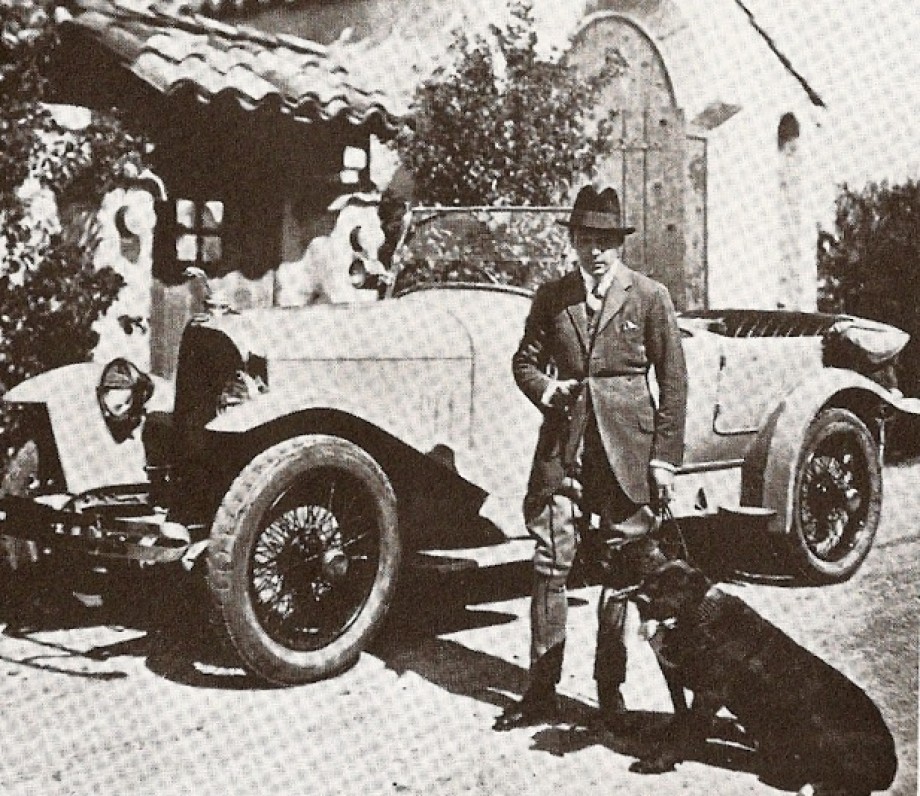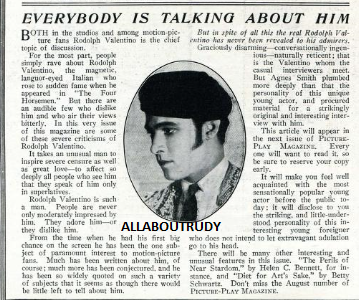
Monthly Archives: Nov 2019
26 Nov 1925- Townsville Daily Bulletin London Rudolph Valentino Returns
Rudolph Valentino, the famous cinema actor who just arrived from America, was the centre of an extraordinary scenes at a West End Cinema theatre, where he personally attended the occasion of the screening of one of his films. He was surrounded by a seething crowd, mostly women. The police forced them back and the doors had to be locked after the performance. Valentino rather than face the crowd which remained in the street, had to escape over the roof of the theatre.
16 Nov 1925 -The Eagle Movie Review
1924 – Superstitious Movie Folk
Agnes Ayres does not like to have anybody sing in her dressing room. But her chief faith in luck is bound up in a wonderful Columbia Clock which has been in her family for years. It is a marvelous mechanism, being made entirely of wood and although of a great age is still running. Miss Ayres firmly believes that her success depends upon the possession of this clock, and so carefully, does she guard the treasure she will not even allow it to be photographed. Her movie colleague, Rudolph Valentino has declared to friends he has no superstitions. But one might wonder why he waited until 14 March to be married to the delightful Natacha Rambova when he could of done so on the 13th as well. Perhaps the fascinating Mrs. Valentino objects to the fatal number. Who knows might be because his first wedding ceremony took place on 13 May. Douglas Fairbanks, Sr. has no faith in crystals or superstitions. Gloria Swanson loves black cats and so tender was her care of the original two pets of the Lasky Studio they sent for all their friends, in-laws, and descendants until 327 cats now live on the lot. This is lucky for the butcher and the cats. Theodore Kostloff treasures a pre-war ten rouble gold piece, now worth $2 million in paper money. Bebe Daniels grandmother has a wonderful collection of dolls and few people know this is a direct result of Bebes belief that good luck follows the purchase of a new doll. Lila Lee is very superstitious about the beginning day of a new film. If she leaves her home in the morning, forgetting something important, she will not turn back herself, but send a messenger after she reaches the studio.
31 Aug 1930 – Two Valentino’s
Nov 1925 – Monsieur Beaucaire Rudolph Valentino Coming
Full of color and romance is “Monsieur Beaucaire” which will be screened at Wests on Saturday, with Rudolph Valentino and Bebe Daniels in the leading roles. It is an elaborate screen version of the popular play, which has been adhered to with remarkable fidelity. There is plenty of suspense in the picture, and an exciting combat between Valentino and six opponents. The Court of Louis, XV, forms a brilliant background for the action, and abounds in colorful scenes, depicting the mad, merry life in that famous court. Ordered to marry the Princess Bourboun-Conti, the Duc de Chartres, played by the star reuses. His efforts to resist the Kings guards provide some of the most thrilling moments that have graced the screen. Hugh sets were constructed for the picture, and the costuming and mounting throughout are on a lavish scale.







You must be logged in to post a comment.